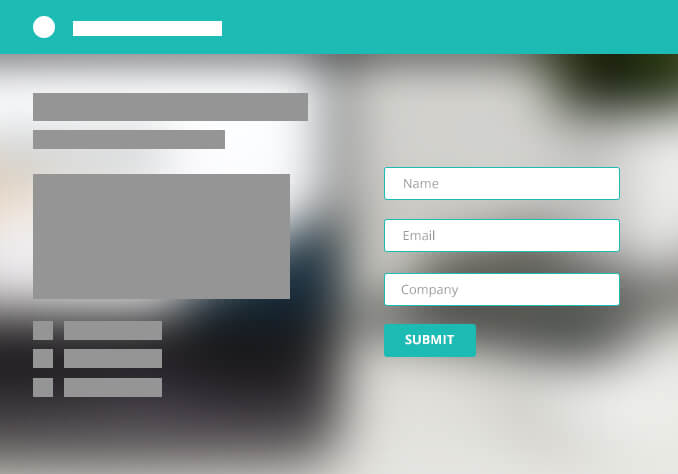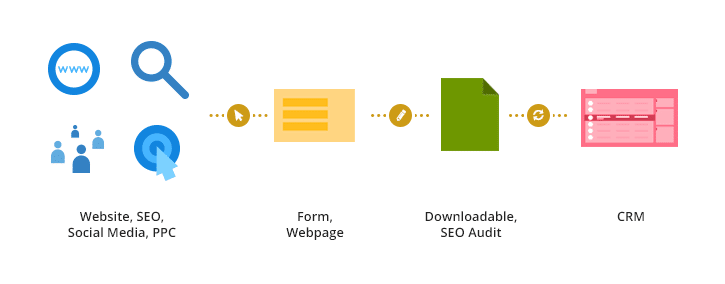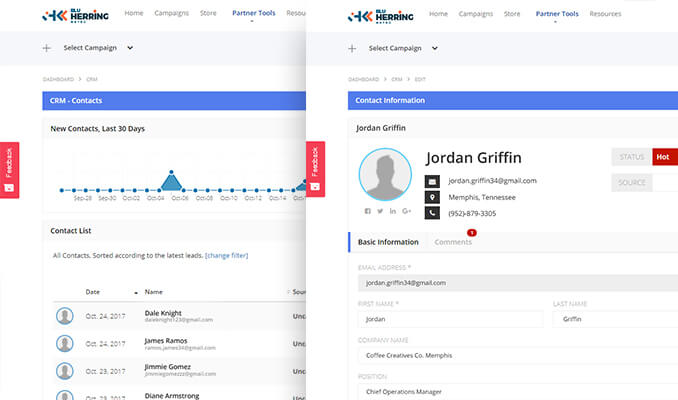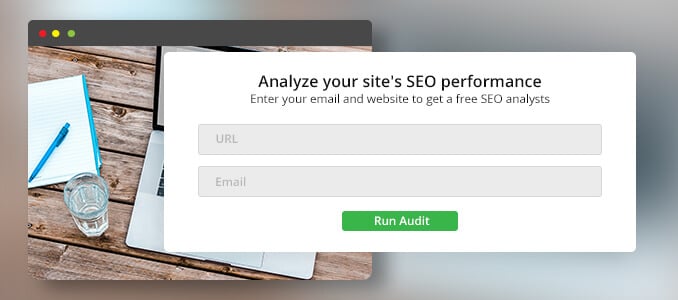It’s something you have heard before: you can increase website leads through optimization. However, you will be surprised that there are actually people who want to provide digital marketing services but don’t try to rank their own websites.
Crazy, right?
Too often we see partner agencies with websites that aren’t built to generate leads– the primary purpose of a website. Unfortunately, business growth cannot happen without generating sales leads.
While you can rely on lead generation tools to find your prospects, your website still needs to be the starting point for attracting leads.
So, what is it about lead generation website development that captures SEO leads?
We’ve done our research, had a bunch of experiments and A/B testing, and implemented different strategies to determine the best way to generate leads with your website. So if you want in on our findings, this blog is for you.
1. Have a Well-Designed Website
This is almost as basic as optimizing your website properly.
Your online business can have a stunningly beautiful website, and unless it’s optimized properly, your prospective customers are not going to find it.
Even if potential sales leads can find your poorly designed website, it’s just not going to affect your conversion rate because your target audience won’t care to stick around long enough to be converted—let alone become your clients.
Go Back to the Fundamentals
You don’t know a thing about web design, you say? That’s totally fine because not everyone starts out as web design experts. More than that, there are web design services that can help you out.
Agencies that start their SEO business don’t necessarily have an initial background in website design and development. Those who have been in the industry for some time might have an idea of what constitutes a well-designed website and use their knowledge to make their website suited to generate leads.
But if you’re new or re-learning website design, start with the fundamentals:
- Intuitive navigation – Don’t make your potential customers guess where links and buttons take them. Make it easy.
- Use images and whitespace – Pages with walls of text won’t convert. Put relevant images and use white space to break up the text.
- Make it look nice – Your leads will want to see a nice looking website before they give you their contact information.
- Have a clear purpose – Each page should serve a purpose aligned with your B2B marketing and business goals.
- Be responsive – Not much else to say. Your business leads are browsing with their phones.
Get Started with WordPress
Not sure which platform to use? Go with WordPress.
It’s free, easy to use, and – with a little patience – you can have a great-looking website that’s designed to be visually appealing and attract your audience.
You can use WordPress SEO agency themes packed with all the elements, plugins, and features that grant you the flexibility to design your website. With this, you can have a pre-built site for the best way to generate leads for your SEO business. Pro-tip: Don’t go overboard with your agency’s website design. It’s easy to grab and install multiple features and plugins, but avoid getting plugins that have similar functionalities.
Pro-tip: Don’t go overboard with your agency’s website design. It’s easy to grab and install multiple features and plugins, but avoid getting plugins that have similar functionalities.
2. Create Effective Landing Pages
Lead Generation Website Development relies heavily on effective landing pages.
Some landing pages are built for informational purposes. However, after your visitors have consumed your content, the next logical step is to get them to convert. In the end, you want visitors to make a buying decision right there and then.
An effective landing page contains conversion-focused elements and optimized for better user experience.
Here are a few pointers to help increase website leads:
- Get rid of anything that doesn’t help turn web traffic into leads.
- Define the service you provide and how it helps your potential customers.
- Make it clear what happens after visitors “click”.
- Make sure it’s clear where they should click.
- Speaking of clicks, minimize them. It should take them only three clicks to get to where they need from your homepage.
3. Use Contact Forms Wisely

If your landing page was convincing and your lead is willing to provide their contact information in exchange for the value you promised, don’t ask for too much.
It would be great to know how much yearly revenue your leads make but do you need that at this point?
A B2B company website designed for lead generation can convert a prospect into a sales lead in seconds. It will take days, weeks, or months to convert the sales lead into an existing customer. Sure, lead conversion and nurturing are easier when you have more information about them but, to get started, you really only need an email address.
If you decide that you need more than an email address, ask for it. Just make it easy with big fields marked clearly.
Add Contact Forms to Where They Matter the Most
Do all your pages need to have contact forms?
Ideally, yes.
But, if you want to measure your website lead generation success, include contact forms to your most valuable pages or those with the most traffic. It can be a high-performing blog post or a pillar service page. As you already have visitors landing on these pages, prompting them with a contact form gives you opportunities for nurturing them later on.
4. Provide Value Immediately
Now you’re well on your way to succeeding at inbound sales and maximizing your website for lead generation. Your potential customers have filled out a form and they are officially business leads. It’s important that you deliver on your promise – immediately.
To guide your leads further down the sales funnel, the value you promised – like cold email template for SEO, the free ebook download, the toolkit, etc. – must have real value and help business owners meet their own sales goals. You will still have their email after a disappointing download, but they’ll be more likely to unsubscribe or mark your email as spam. And you can’t grow your business by not delivering on your promises.
Lead generation website development geared towards a B2B model is especially tricky because your clients are looking for value that they can pass down to their customers. You can start with providing them with a free SEO audit, but other ways you can offer value include:
| Cheat sheet | Case Study |
| Checklist | Webinar |
| Template | Whitepapers |
| Kits | Presentation |
| Research | Tools |
5. Display Trust Signals
Social proof and lead generation are old friends. Nothing communicates that your agency is the right agency for a business quite like social proof.
Having trust signals not only makes your agency look good in the eyes of Google, but also gives potential clients the assurance you’re a credible SEO business.
Collect Your Best Testimonials
Testimonials from your existing customers are an important part of B2B lead generation because they can ultimately lower the cost of your lead generation website development strategy – and minimize the amount of time it takes to convert your leads.
If your agency focuses on local SEO, seeing that other local businesses trust your agency and services sends a powerful message.
Show Off Your Success Stories
Success stories are one of the best ways to generate leads. These give your potential clients a preview of what it’s like to work with your agency and what you can bring to the table. Having success stories shows that you can walk the talk and deliver results that make an impact on businesses.
Use visuals to support your content. In this case, you can display graphs and charts that represent data from your success stories. This works best if you’re showing results from previous campaigns and mapping your agency’s processes.
6. Maximize Your Digital Marketing Initiatives

Generating SEO for increased website leads combines many different aspects of digital marketing: web design, search engine optimization, content marketing, conversion rate optimization, and more.
Your website stands at the center of your digital marketing initiatives. Ads, email marketing campaigns, or even remarketing banners lead back to your website. It’s a matter of knowing how you maximize these strategies to increase website leads.
To get more leads to your website through different digital channels:
- Get on social media — Your customers are on social, so what are you waiting for? The more you build awareness and engagement on social media, the more leads you can bring back to your website. Be sure to integrate social media buttons on your website.
- Give content marketing a try — You have the best blog post on your website, but if it doesn’t capture the eyes of potential clients, you’re missing tons of opportunities to convert them. Get your website content on as many digital channels and use different content forms to pique your audience’s interest, be it a video or an infographic.
- Start an email marketing campaign — A well-crafted email with the right message for the right message, and most importantly, linking back to your website, can be an effective way of getting more leads.
7. Organize and Track Your Leads

If you have done everything right up to this point, including optimized your website for lead generation, the leads should start coming in. But what are you doing with all their contact information?
The key to successfully nurturing your leads is having them in one easy-to-use CRM. Bonus points if you have a free CRM that allows you to update lead status, send proposals, check the status of sent proposals, and comes with marketing automation. Knowing where your leads are in the sales funnel at a glance can help identify which of the previous steps you need to adjust to generate more business leads.
8. Don’t Forget to Test
You’ve done all the steps above. So, how do you know if they’re making an impact?
That’s the importance of A/B testing.
A/B testing provides you the baseline on the performance of your website after implementing a few changes. Something as simple as including a contact form on blog posts can give you data on which lead generation website development strategies are working.
How Long Do You Run a Test?
If you only did an A/B test for a week, you may not have substantial data to see if there are significant changes to the performance of your website.
The length of time when doing an A/B test depends on the data you want to unearth. In this case, you want to see which parts of your leads website are converting. If you changed a CTA on a landing page, you should give it at least two weeks so you have enough data to compare your previous results with.
Key Takeaways: Turn Your Website into a Lead Generation Machine
Your website is more than a digital business card. It’s the crux of lead generation and conversions.
But, turning your website into a lead generating machine isn’t as complicated as rocket science. In fact, following the steps we’ve outlined above can give you the jumping point to increase website leads.
Just keep in mind the following:
- Make your website pretty, but don’t go overboard. Always go back to what matters to your users.
- Design landing pages for conversions. Minimize the clutter that distracts your leads from taking action.
- Add contact forms where they matter – not just for the sake of having them on the page.
- Provide value, whether it’s an ebook or a whitepaper. Your visitors will appreciate it. Plus, it gives you the common ground to nurture and connect with them later on.
- Wear trust signals like a badge.
- Don’t stop at SEO; maximize digital marketing initiatives. The more you drive targeted traffic, the more leads you can convert.
- Use a CRM to organize and track every lead that goes into your website.
- Don’t stop testing. If you don’t have data, you won’t have a benchmark to increase website leads.
One More Thing…
Let’s end this with a freebie.
In terms of providing immediate value and converting leads for your website, the best way to generate leads is to analyze everything from technical elements, content structure, social media presence, keyword density, domain and page authority plus a lot more.

You can provide that now by installing our WordPress plugin for agencies. This free plugin is the ultimate lead generation tool—it comes with an SEO audit widget, a lead tracker, web design portfolio, and a white label dashboard that you can show off to your clients with your agency’s brand.
Install it, give it a try, and let us know if your website is starting to get leads!
If you are wanting to discuss these steps before beginning, make sure to Speak to an Expert or Sign up and we can help you!


